Two weeks ago I spoke during the meeting of the Advisory Council on Historic Preservation regarding the Future of the National Register of Historic Places, which will be 50 years old next year. I detailed some of the shortcomings that have emerged over that time, including a startling “Diversity Deficit.”
Less than 5% of the buildings listed on the National Register evoke the nation’s diverse history – the rest chronicle white men, who are much less than half the country. I also detailed many of the challenges in preservation practice that we inherited from an architect-driven 1960s practice, one that has a tendency to focus too much on the formal.
The photo is one of may favorite examples, from St. Nicholas Avenue in Hamilton Heights, New York, the building lacks architectural integrity. But Ralph Ellison wrote Invisible Man there in 1947, a book more relevant than ever today. The building is authentic but does not have integrity. The problem is not the building but our practice – we adopted the architectural concept of “integrity” in 1966 instead of the international concept of “authenticity.”
Authenticity, Not Integrity
If you look closely at the integrity criterion, you do find “feeling” and “association” listed, which arguably come close to a definition of authenticity and in fact ACHP Chairman Wayne Donaldson suggested just that in response to my presentation.
The problem for professionals is that they have a hard time defining such vague terms (and you can imagine how lawyers react!). It is only a problem if you leave it in the hands of the professionals. Answer: Bring in the community.
The answer works in tiny villages, big cities and in every language.
Preservation is a Process. I have said before that the way heritage conservation works internationally is by engaging the community in the Process of Identifying Heritage, Evaluating Its Significance, and Determining the appropriate Treatment for bringing that heritage into the future.
That is what the Burra Charter says, and it reconciles the fabric-and-architecture-based preservation of the West with the tools-and-techniques-based conservation of the East. The same approach will work especially well in dealing with underserved cultural groups in the United States. I wrote about a particularly important example of this – the Maravilla Handball Court in LA – several years ago with my friend and colleague Anthea Hartig in this blog post. Another example in the LA area is of course the Biddy Mason memorial created in the early 1990s by Power of Place.
One of the great examples where interpretation IS preservation.
We need to move away from the idea that historic preservation is about the past. It is always a future-oriented decision. The past is not a foreign country but the foundation for the future, the roots of who we are, what we do and where we will go. So what does this mean for the actual processes involved in nominating properties to the National Register of Historic Places and reviewing them?
What Are The Solutions?
I challenged the ACHP to embark on a series of solutions to make the National Register relevant for the next 50 years, including drafting new context statements designed to chronicle the histories of more Americans, especially those cultures like the African-American and American Indian that were deliberately erased or hidden at one time or another. A great example of this is the excellent work Joseph McGill does with the Slave Dwelling Project.
Community tour workshop, Auburn-Gresham, Chicago, 2010.
Community involvement is essential to identifying what is important to communities, and how that importance (significance) can be brought into the future.
I pushed the Advisory Council on Historic Preservation to involve community in each step of the preservation process. I also suggested that while we might look at architectural integrity (on a sliding scale) when treating properties with architectural significance (Criterion C), we should look to authenticity when reviewing properties significant due to their association with an historic event, theme, or person (Criteria A and B).
O Henry house, Austin.
O Henry plaque, Asheville.
O Henry House, San Antonio
To me one of the keys is interpretation. If we can require World Heritage Sites to have a management plan (which usually includes a conservation plan and an interpretation plan) why shouldn’t properties listed for their historic significance come with an interpretive plan?
One of the greatest challenges to the heritage conservation/historic preservation MOVEMENT is the fact that we rely on ONE specialized field – architecture – to do all of our work. Strong interpretation builds constituency because the everyday people can UNDERSTAND WHY we are saving something.
Nice Gothic cottage. Hey, who is that out front?
We lament our inability to gain the traction that the environmentalist movement has. But the environmental movement doesn’t require every supporter to be a scientist – why should we require every supporter of heritage to be an architectI? I have debated integrity with engineers and other experts – this is a tough concept and it does not help our public image.
Period of Significance
Ouch. Another one. When I was on the Illinois Historic Sites Advisory Council in the late 1990s, most of the National Register nominations we got listed the period of significance as the date of construction right up to 50 years ago, which is the (completely unfounded – see here) standard. My opinion, at that time, was that it was confusing since it seemed to me you could then make changes to the building as long as they fell within the period of significance, which included aluminum windows and doors and so forth.
Chess Records, 2120 S. Michigan Avenue, Chicago. A 1911 building whose storefront is 1957 and whose period of significance is 1957-1967 when Chess Records was there.
I now see what the Illinois Historic Preservation Agency staff were trying to do – grant as much space as possible. In the 1960s and 70s and even 80s (big hair – we couldn’t think straight) we followed the hoary old architectural practice of restoring a building to a certain date. By the 1990s we realized that information could be lost – or misinterpreted – by choosing a single date. The building above makes total sense restored to two different dates a half-century apart. Plus, starting in 1990 we allowed historically-styled additions to buildings, finally recognizing that style in itself is not an age indicator.
Joliet Public Library, (Daniel Burnham, 1903, left, with 1990s addition right)
The biggest problem with Period of Significance and Integrity to is the underlying assumption they make about heritage conservation/historic preservation. They assume that it is about a point in the past. They assume there is a gulf between the present and the past and that we need to design and build a bridge to get there.
This is the most problematic concept underlying our preservation practice and the National Register of Historic Places. It puts things at a distance, just like a traditional house museum does, telling us not to TOUCH.
If only we could do this at scale, then it would be protected!!
(Ironically, this is one of the most vibrant house museums in the country, Jame Addams’ Hull House Museum. It was restored based on the (incorrect) painting seen there despite photographic evidence showing an entirely different roof form. Architecturally it has negative integrity, but tons of authenticity due to the programming and interpretation.
In this space the public in invited every week to debate issues just as Jane Addams did.
This is the biggest conceptual problem causing the Diversity Deficit and requiring a rethink of how we use the National Historic Preservation Act, which turns 50 next year. We have to stop letting our preservation practice suggest that what we are doing is somehow a separate thing. That is the world of the museum and monument, not the world of living resources.
My international experience, especially in Asia, has underscored the value of living heritage – not only intangible heritage but also those places where the techniques and tools of historic form-making survive, just as language and music survive. They are all in danger of being lost, but contrasting living traditions to our own National Historic Preservation Act of 1966 made me realize how much of our preservation practice is predicated on a lack of continuity – the fact that there is an irreparable break between present and past.
This February I was part of a Climate Change and Heritage conference at the Pocantico Center in New York. The group included Queen Quet of the Gullah Geechee Nation, who served as an advocate for living heritage. No gulf. Continuity.
Department of Interior mural by Gerald Nailor, c. 1940
In this regard, I am very excited to have the opportunity to repeat my presentation in two weeks for the National Association of Tribal Preservation Officers. The goal of American Indian tribes is to conserve their culture, which was deliberately suppressed for much of our history. It is about bridging the chasm, erasing the gulf and building continuity with the past. The last significant legal updates to U.S. preservation practice came in the early 1990s with legislation focused on native American tribes. I think this is an ideal place to reinvigorate our national preservation practice.
NOTE: Welcome to the second decade of this blog. It began in August 2005 and here we are 455 posts later.
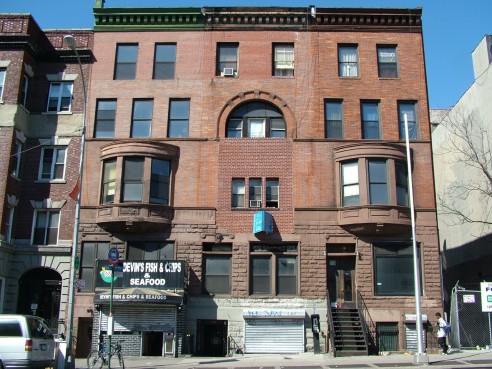
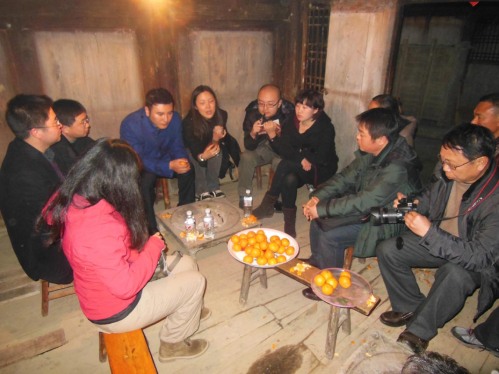
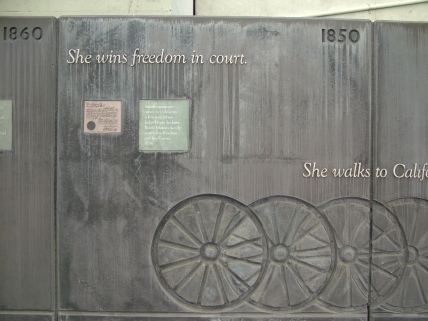
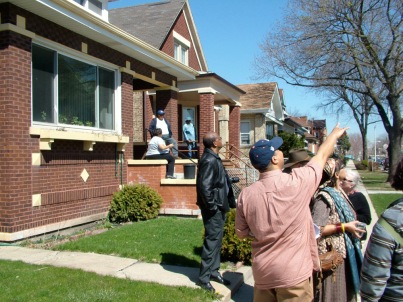





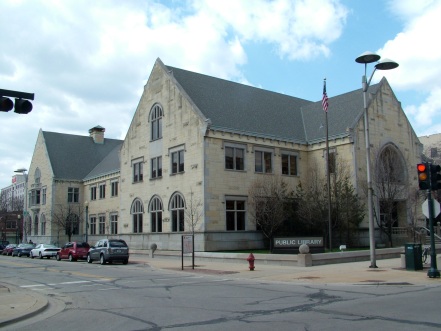

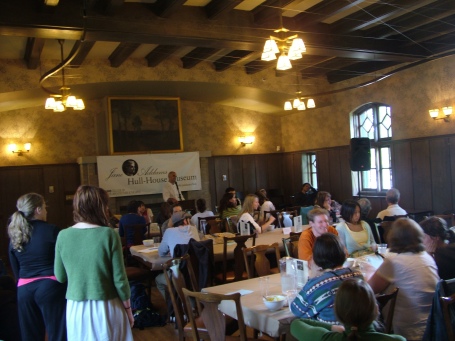



August 6, 2015 at 1:00 pm |
Hoping for a nice 10 year anthology piece at the end of the month.
December 18, 2015 at 10:29 pm |
[…] the story of a male of European descent. You can see some of this year’s blogs on the topic here and […]